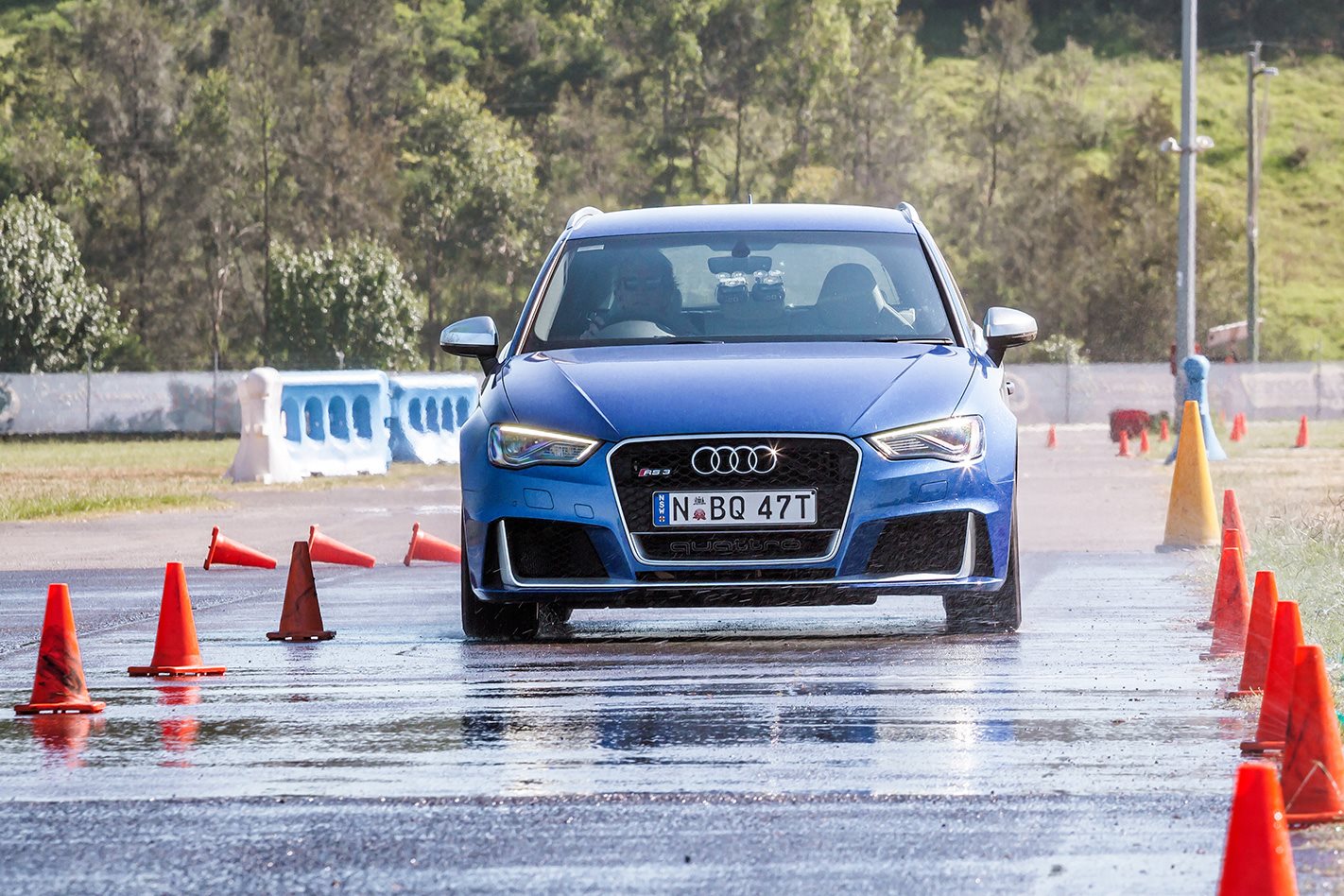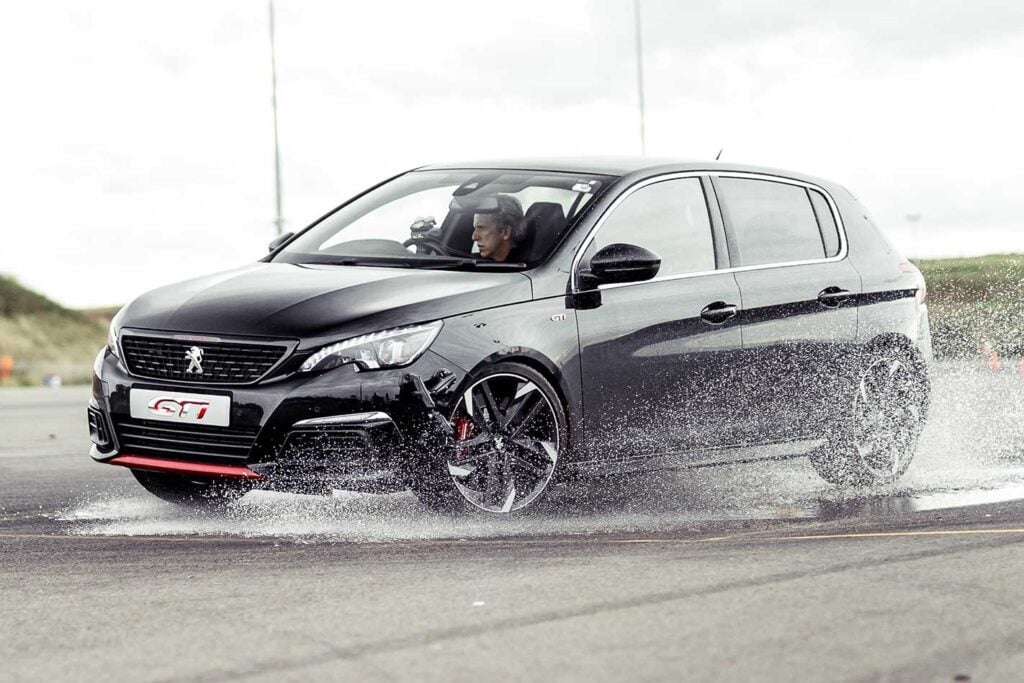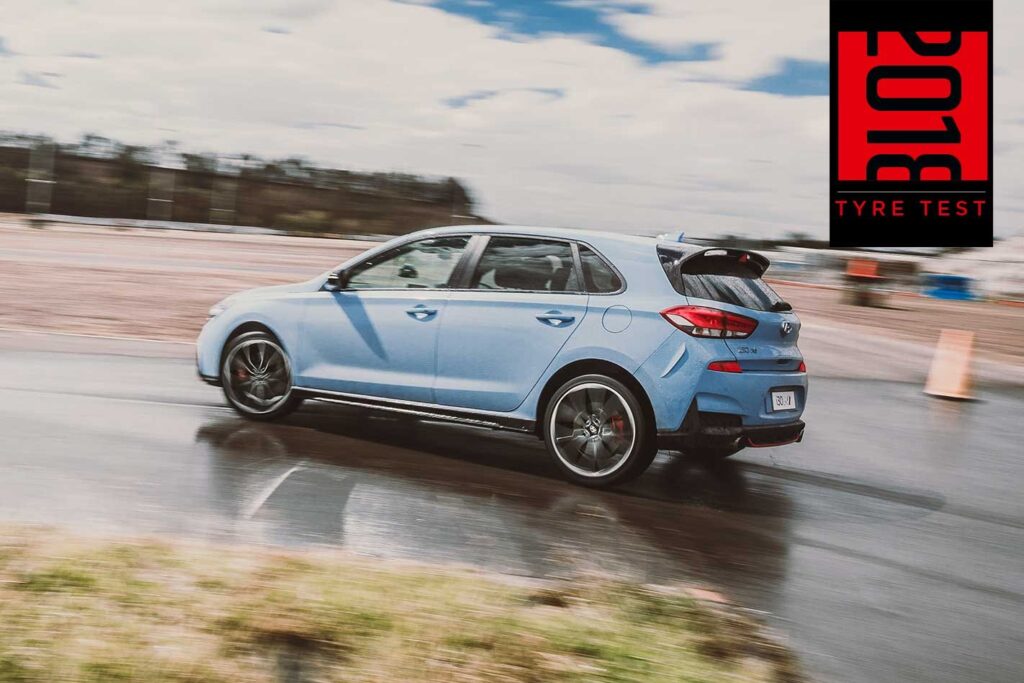Our fifth and final discipline isn’t a foregone conclusion, regardless of the relentless success enjoyed by the Dunlop Sport Maxx RT so far. If our previous tests were ideal-world conditions, this one is real world.
A road tyre that can’t perform when dark clouds unleash their contents is of little use to any true enthusiast driver with a high-performance daily driver. If you’ve ever experienced aquaplaning, you’ll know it’s not as fun as it might sound. When you’re driving at speed, you don’t want your car trying to do an impression of a surf board that not even Kelly Slater could control.
Fortunately, none of our 10 competing tyres could be accused of being semi-slicks. Virtually all are of the asymmetrical-tread variety – compromising optimum dry grip by featuring plenty of the deep grooves and smaller slits critical to channelling water away from the contact patch. Interestingly not one tread pattern looks alike, so it’s all down to their specific design and compound.

Luffy conducts the runs with third-gear approaches, dropping the anchors while cold at 70km/h. The Driftbox records the stopping distance from 60km/h to a brake-juddering halt.
With Australia’s harsh sun baking the bitumen at up to 55 degrees surface temperature at one point in the afternoon, our water tanker was kept busy – frequently unloading the water to ensure a consistently wet test section.
If there had been any thoughts the Toyo, Nexen, HiFly and Nitto tyres had sacrificed some dry-grip performance to be superb in the wet, they were soon dispersed once the taps had been turned on.
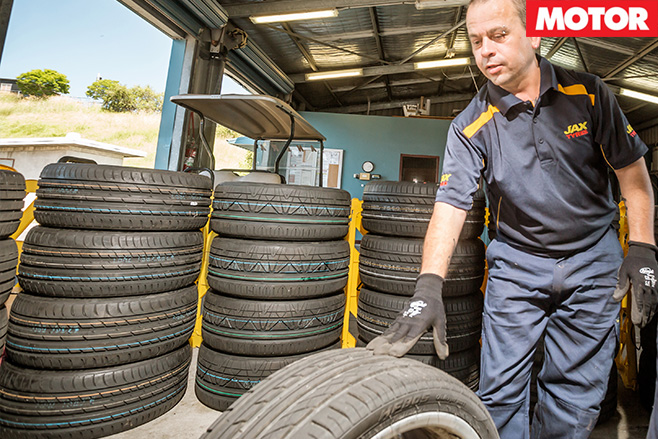
Pirelli, Michelin and Goodyear occupied the midfield, closely matched in a stopping range from 15.04 to 15.57m. Hankook halted just below 15m to register an impressive third place.
And just four centimetres separated first and second. As shown in the raw data on the opposite page, Dunlop scored the win on the day to make it a remarkable clean sweep, though after our linear regression calculations were made post-testing (see breakout) the Continental was established – by the numbers – as the adjusted wet-track victor.
WET BRAKING RESULTS
| Rank | Tyre | Metres |
| 1 | DUNLOP SPORT MAXX RT | 13.96 |
| 2 | CONTINENTAL CONTISPORTCONTACT 5P | 14.00 |
| 3 | HANKOOK VENTUS S1 EVO2 | 14.97 |
| 4 | PIRELLI P ZERO | 15.04 |
| 5 | MICHELIN PILOT SUPER SPORT | 15.37 |
| 6 | GOODYEAR EAGLE F1 ASYMMETRIC 3 | 15.57 |
| 7 | TOYO PROXES T1 SPORT | 15.73 |
| 8 | NEXEN N FERA SU1 | 15.88 |
| 9 | HIFLY HF805 CHALLENGER | 16.52 |
| 10 | NITTO INVO | 16.54 |
We regress
Levelling the field

How the control tyre’s performance changes gives us an idea how the playing field might also be changing. It’s called linear regression and it’ll finish off the battery in your calculator, but basically applied to the raw data to cancel out any advantages or disadvantages a given tyre might enjoy or suffer, the only change to our final line-up was a tying of the last three places for the HiFly, Nitto, and Nexen.
MORE MOTOR TYRE TEST 2016
 LATERAL G
LATERAL G
Going around in circles doesn’t always mean you’re lost. MOTOR found the answers it was looking for in its final dry-bitumen discipline: the lateral G test. Or circle test/cornering test, by other names.
 THE VERDICT
THE VERDICT
A worthy winner sweeps the board in all categories.
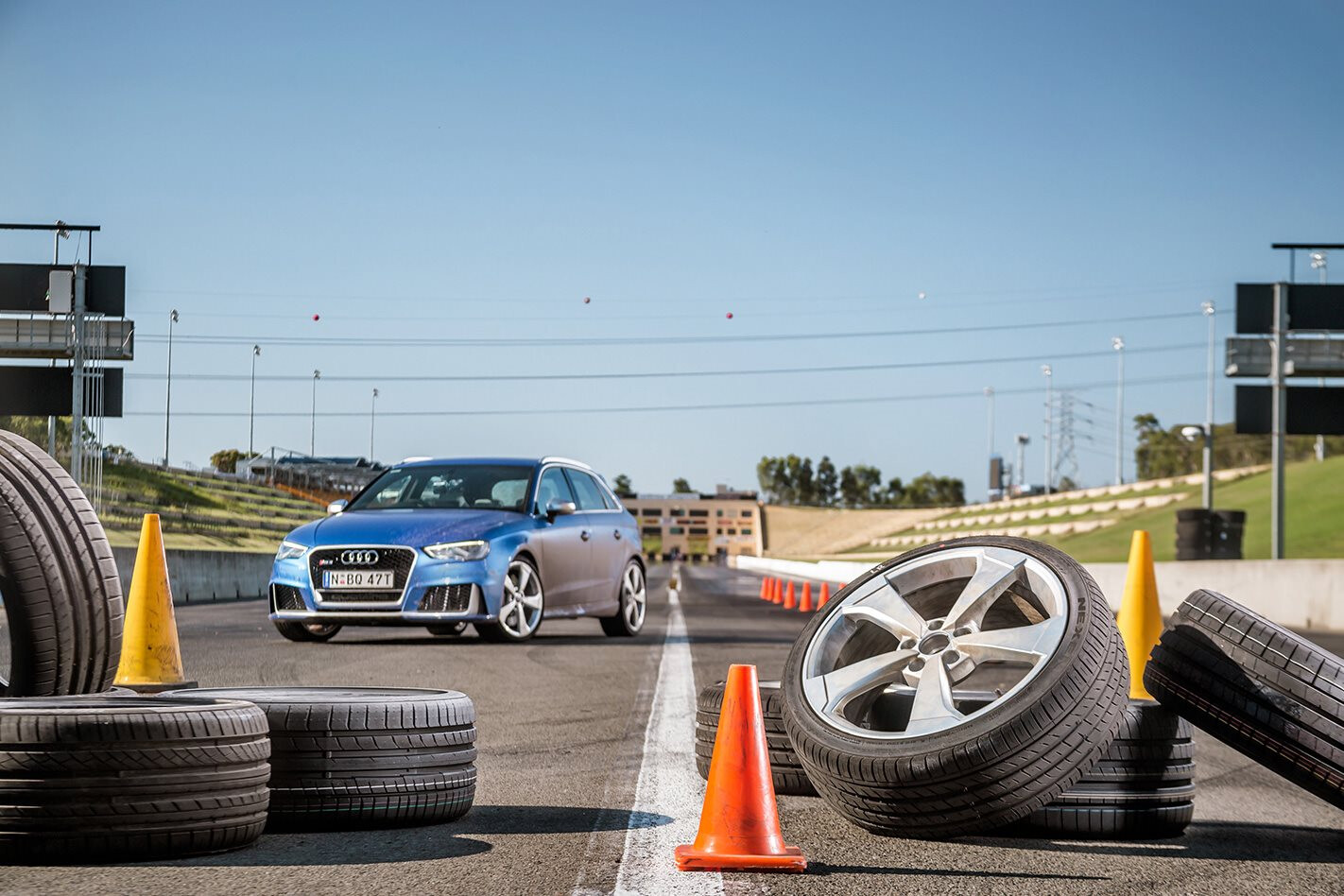 MOTOR TYRE TEST 2016
MOTOR TYRE TEST 2016
Finding the best high performance tyre in Australia
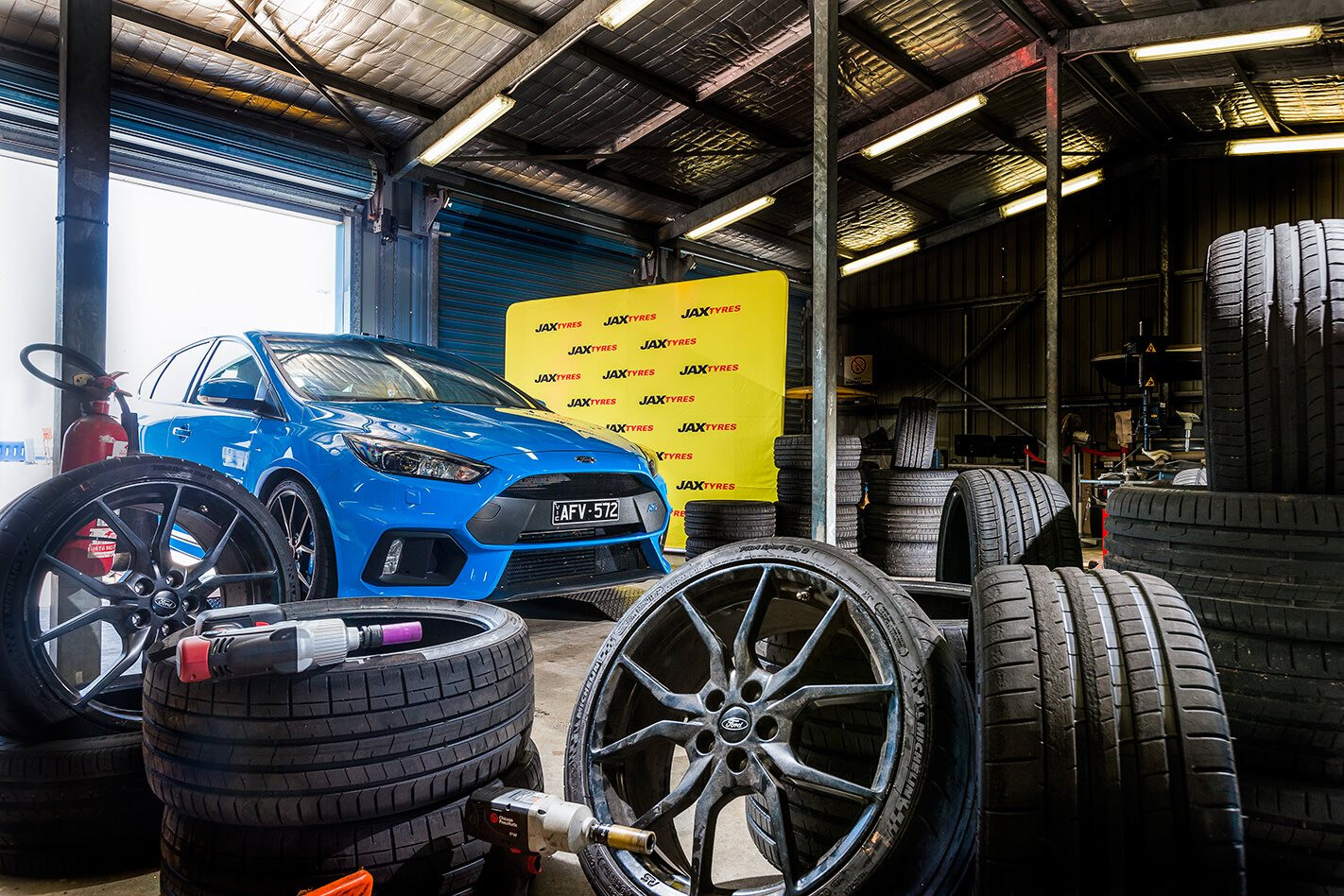 MOTOR TYRE TESTS
MOTOR TYRE TESTS
The quest to find the best high performance tyres in Australia.


